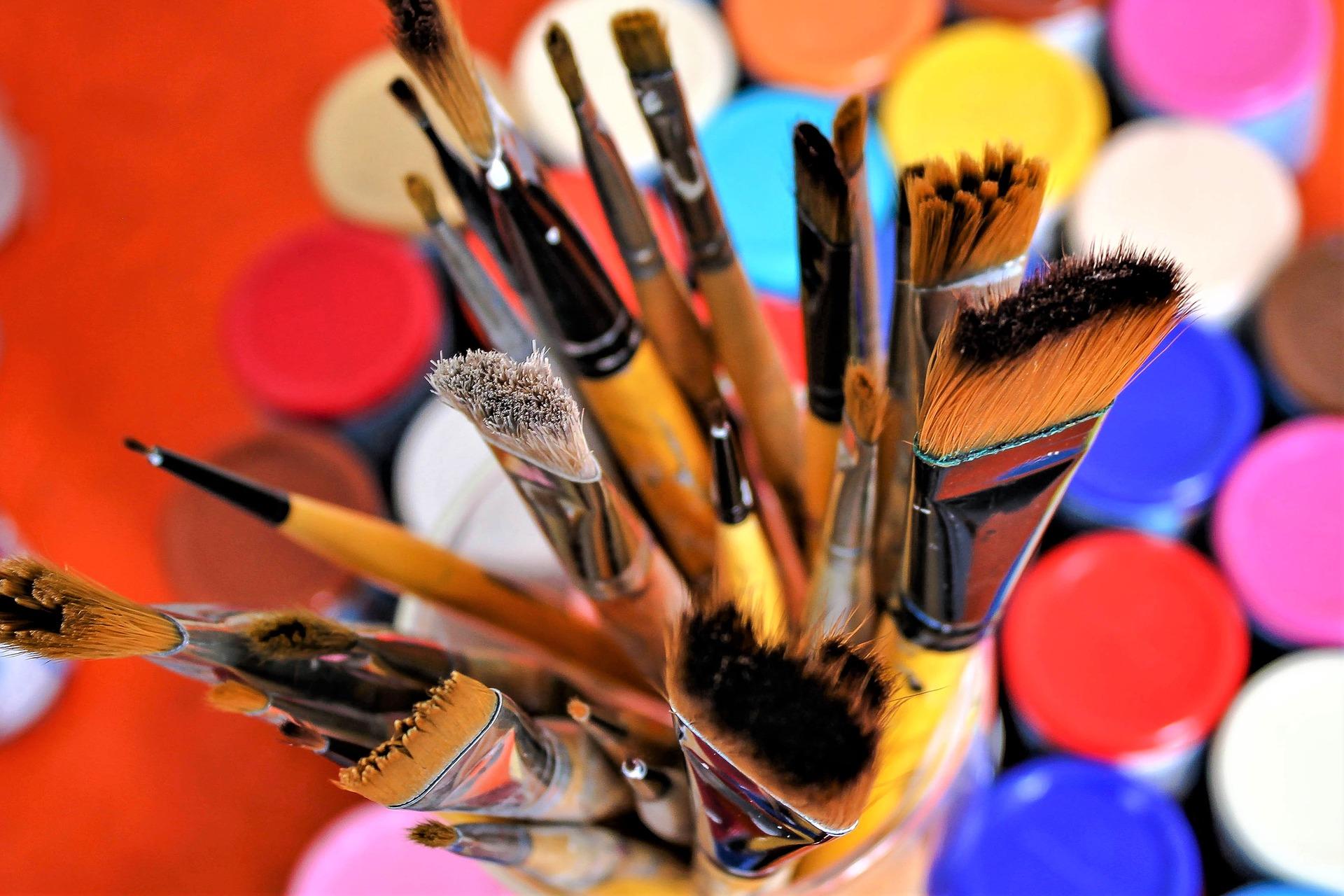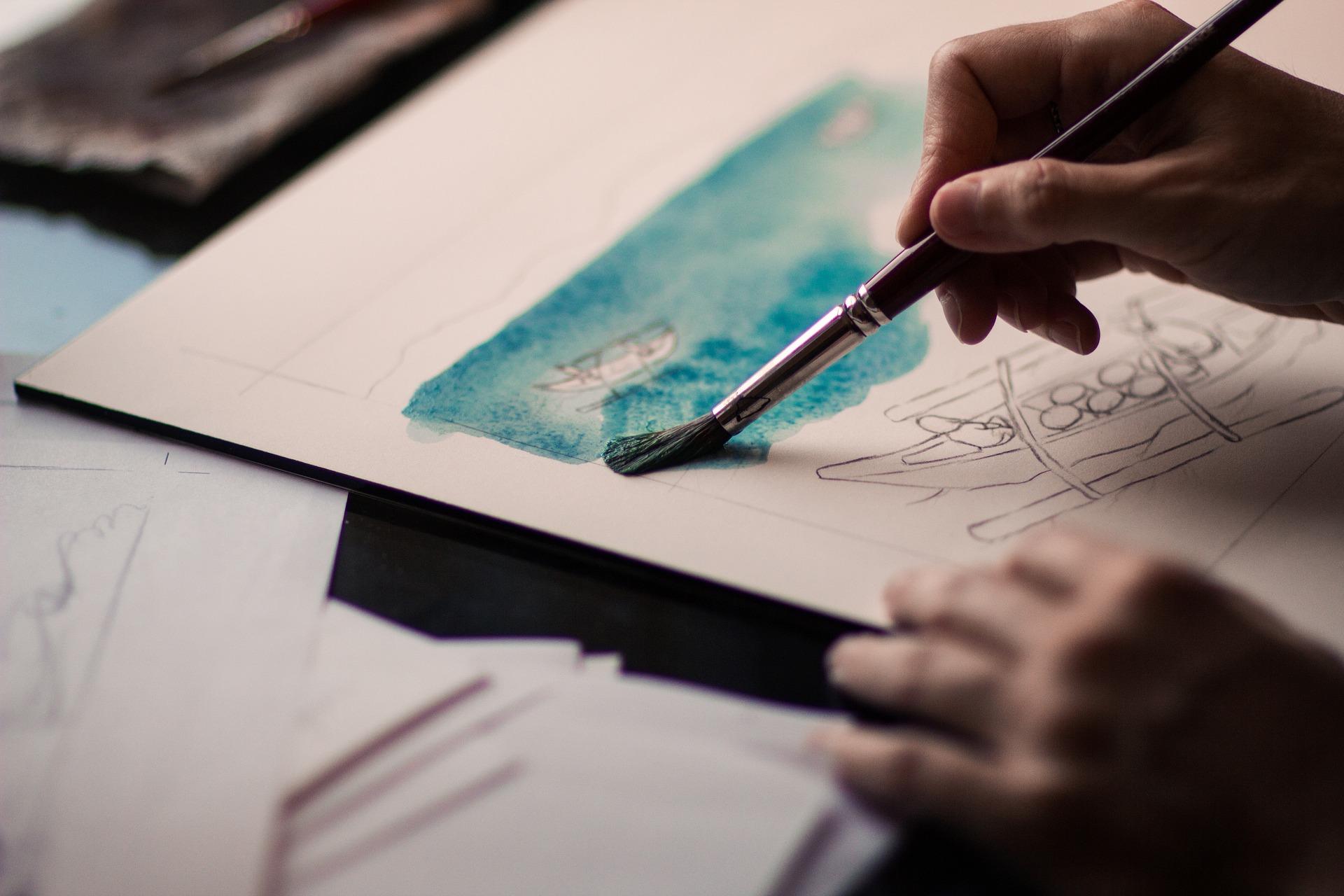“Painting is easy when you don't know how, but very difficult when you do.” - Edgar Degas
A lot more people would be interested in artistic pursuits like painting, dancing, sculpture, or photography if they had the time and the money.
So why not set aside a bit of time and learn how to paint with acrylics?
While acrylics can be used for painting walls, they’re mainly used for creating art. From primers, primary colors, and additives to glazes, washes, undercoats, and extra-fine paints, here’s our guide to acrylic painting. Whether you don't have a clue about mixing colors or using an easel, both beginners and experts alike can paint with acrylics.

What Are Acrylic Paints?
Acrylic paints are a type of water-based paint that uses acrylic polymers as the binding agent. They are known for their versatility, vibrant colors, and quick drying time. Acrylic paints consist of pigments suspended in an acrylic polymer emulsion, which gives them their characteristic consistency and properties.
Here are some key characteristics and features of acrylic paints:
Versatility: Acrylic paints can be used on various surfaces, including canvas, paper, wood, metal, and even fabric. They can be diluted with water for transparent washes or applied directly for opaque coverage. Acrylics can also be mixed with various mediums to create different textures and effects.
Fast drying: One of the advantages of acrylic paints is their quick drying time. Unlike oil paints, which can take days or even weeks to dry, acrylics dry relatively fast, usually within minutes to a few hours. This property allows artists to work more quickly and apply multiple layers or details without extended waiting periods.
Color vibrancy: Acrylic paints are known for their vibrant and intense colors. They offer a wide range of hues, from opaque to translucent, and can be mixed to create custom colors. The colors remain true and do not yellow or fade over time.
Water-based and non-toxic: Acrylic paints are water-based, making them easy to clean up with water. They are also generally considered non-toxic, although some pigments or mediums may contain additives that require caution. It's always advisable to read the labels and follow safety guidelines while working with any art materials.
Durability: Once acrylic paints dry, they form a durable and flexible film. This makes them resistant to cracking and yellowing over time. Acrylic paintings can also be varnished for added protection and to enhance the appearance of the artwork.
Find painting classes in Pune on Superprof.

According to Wikipedia, “Acrylic paint is a fast-drying paint made of pigment suspended in acrylic polymer emulsion.”
How Do You Start Acrylic Painting?
Learning about acrylic painting as a beginner can be an exciting and rewarding journey. Here are some steps you can follow to start learning about acrylic painting:
Gather basic materials
Begin by gathering the necessary materials for acrylic painting. These typically include acrylic paints, brushes of different sizes and shapes, a palette, a canvas or painting surface, water for cleaning brushes, and a rag or paper towel for drying brushes.
Explore beginner-friendly resources
There are numerous resources available to learn about acrylic painting. Start by exploring books, online tutorials, and video lessons specifically designed for beginners. Look for resources that cover topics such as color mixing, basic techniques, brushwork, composition, and different painting styles.
Practice basic techniques
Start with basic techniques to familiarize yourself with the medium. Experiment with brushstrokes, blending colors, creating different textures, and applying washes. Practice techniques like dry brushing, wet-on-wet, glazing, and layering to gain confidence and understanding of how acrylic paints behave.
Learn Color Theory
Understanding color theory is essential for any painter. Learn about primary, secondary, and tertiary colors, as well as complementary colors and color harmonies. Experiment with color mixing to create a wide range of hues and shades.
Color theory is the study of colors and their relationships, used in various fields like art, design, and science to understand how colors interact and impact perceptions. It encompasses concepts like the color wheel, color harmony, and the emotional or psychological effects of colors.
There are primary colors (red, blue, yellow), secondary colors (orange, green, purple), and tertiary colors (mixtures of primary and secondary colors). Different color combinations create different effects, which artists and designers leverage to evoke certain emotions or convey specific messages in their work.
Study composition and design
Composition plays a crucial role in creating visually appealing artworks. Learn about concepts such as balance, focal point, rule of thirds, and leading lines. Explore how different elements interact within the frame and how to create a visually balanced composition.
Seek inspiration and observe
Look for inspiration from various sources like nature, artwork by other artists, or everyday life. Observe the use of color, texture, and brushwork in different paintings. This will help you develop your artistic style and provide ideas for your artwork.
Learn more about the differences between acrylics, oils, and pastels!

Why Use Acrylic Paints?
What is so special about acrylic paint and what are the advantages of using it?
Acrylic paints can be easy to use. Once they're mixed with a bit of water, they're very easy to paint with.
It can be used on a wide range of supports and surfaces making it many artists’ favourite type of paint.
However, acrylic paint, unlike oil paint, dries very quickly. It’s therefore very difficult to go back to your work in order to change the colours.

This can also be its biggest strength. You don’t have to wait weeks for the layers to dry like you have to with oil painting. That said, some painters do leave their acrylics to dry for a bit longer.
Acrylic paint can also be used to base your work before painting on a stretched canvas with oils. It doesn’t quite work the other way round, though.
You can use acrylics for a variety of different pieces. It’s one of the most common types of paint used in art classes, painting tutorials, and online art classes. I’ve always loved painting with acrylics.
It’s also very easy to quickly copy the greats like Monet, Courbet, Delacroix, Dali, Da Vinci, Picasso, Cézanne, Degas, Rubens, Botticelli, Renoir, Rembrandt, Van Gogh, or Manet.
How Do You Use Acrylic Paints?
Acrylics are very easy to use. There are plenty of acrylic painting techniques: you can work with a palette knife, brush, or whatever. You can paint to your heart’s content!
So how do use this type of paint?
While there’s no surefire way to paint with acrylics, here’s some advice.
Start by applying a layer of acrylic paint to smooth out the surface of your canvas. This paint will also act as the background to your work. If your composition is light, avoid using a dark colour for the base.
Make sure that the paint is slightly diluted. Choose a colour close to the main colour of your piece. Some artists paint shapes directly onto the canvas with a brush. If you’re not sure of yourself, you can sketch with charcoal, chalk, graphite pencils, etc.
Find out about class painting here.

You’ll need to add colour to your work, too. Start with the background objects first. Even if you make a mistake, you can always go back over it later with the elements in the foreground.
Go from the lightest to the darkest colours. You’ll finish by adding the dark shadows to your piece in order to give it depth. You can achieve a wide range of textures and tones with your strokes. You can create dynamic works with each brushstroke visible.
You should then protect your work by using a special varnish for acrylic paints which can be found in art shops. This will stop the paint spoiling over time.
Join the discussion: is it easier to paint with acrylics or with to paint with watercolours?

Check for online painting classes here.
Simple Acrylic Painting Tips ( For Beginners)
Prep Your Surface
Make sure your canvas or paper is primed for acrylics. Gesso is commonly used to prepare surfaces for painting.
Use Quality Brushes
Invest in a few good brushes of different sizes and shapes. Synthetic brushes are great for acrylics. Choosing brushes for acrylic paint depends on the type of work you're doing and personal preference, but here are some popular options:
- Synthetic Brushes: They're durable and great for acrylics. Look for ones labeled specifically for acrylic paints.
- Round Brushes: Versatile and good for detailing, lines, and filling in small areas.
- Flat Brushes: Ideal for broader strokes, covering large areas, and creating sharp edges.
- Filbert Brushes: Combine the qualities of round and flat brushes, great for blending and softer edges.
Blend Quickly
Acrylics dry fast, so blend colors while they're still wet. You can use a wet brush or a blending medium to extend drying time.
Layering Is Key
Start with lighter colors and gradually add darker ones. Layering gives depth and dimension to your painting.
Experiment With Textures
Acrylics can be thickened with a gel medium or texture paste to create interesting textures.
Keep Water Handy
Acrylics are water-based, so keep a jar of water nearby to rinse your brushes and thin your paint if needed.
Work from background to foreground
Start by blocking in the background and gradually work towards the foreground.
Don't be afraid to make mistakes
Acrylics are forgiving. If you don't like something, let it dry and paint over it.
Protect Your Work
Once your painting is done, apply a varnish to protect it from dust and UV damage.
What Equipment Do You Need to Paint with Acrylics?
Painting with acrylics requires a few essential tools and materials to get started:
- Acrylic Paints: Choose a variety of colors based on your preference and the specific project you're working on. Acrylic paints come in different consistencies, from heavy body to fluid acrylics.
- Paintbrushes: Invest in a range of brushes suitable for acrylics, including flat, round, and detail brushes. Different brush shapes and sizes are useful for various techniques and effects.
- Palette: Use a palette to mix and blend your acrylic paints. You can opt for a traditional palette made of wood or a disposable palette pad.
- Palette Knife: This tool is handy for mixing paints on the palette and applying thick layers of paint or texture.
- Surface or Canvas: Acrylics work well on various surfaces such as canvas, wood panels, paper, or acrylic-specific pads. Make sure the surface is properly primed for acrylic painting.
- Easel: While not mandatory, an easel can provide a more comfortable working position and better control over your artwork.
- Water Container: Acrylic paints are water-based, so having a container for water to clean brushes and thin paints is necessary.
- Rags or Paper Towels: Keep these nearby for cleaning brushes, wiping excess paint, or making corrections.
- Varnish or Sealer: Once your acrylic painting is complete, using a varnish or sealer can protect the finished piece and enhance colors.
- Protective Gear: Optional but recommended, especially if you're sensitive to fumes—consider using a mask or working in a well-ventilated area.
Now discover how to paint with pastels...
















